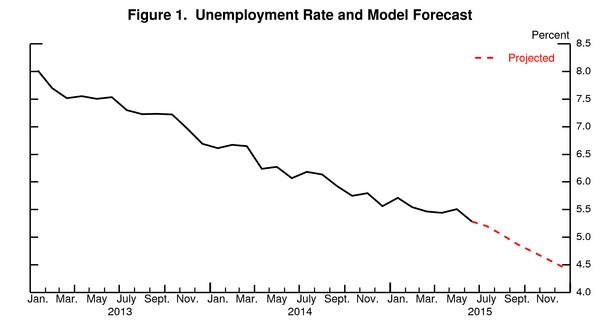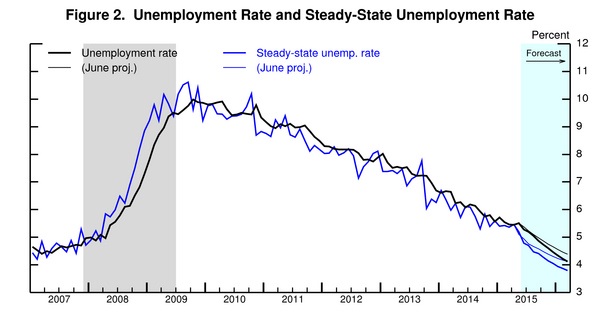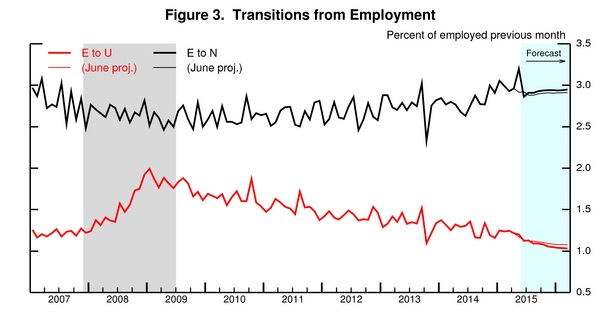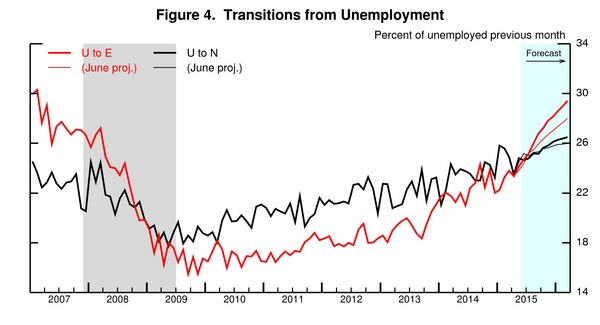This post discusses my monthly update of the Barnichon-Nekarda model. For an introduction to the basic concepts used in this post, read my introductory post (Full details are available here.)
In June, the unemployment rate dropped by 20 basis points to reach 5.3 percent. The model had been anticipating this strong decline in unemployment for a few months now, and this drop comports with the model in its reading of recent unemployment dynamics. Consequently, the contour of the forecast remains unchanged, and the model expects unemployment to decline steadily over the coming months. The model predicts a jobless rate of 5.2 percent for July, reaching 4.5 percent by the end of the year.
The model’s forecast can be easily understood by looking at the projected behavior of the “steady-state” unemployment rate — the rate of unemployment implied by the underlying labor force flows (the blue line in figure 2) stands currently at 4.7 percent, 0.5 percentage points lower than the actual unemployment rate. Our research shows that the actual unemployment rate converges toward this steady state. With the steady-state unemployment rate lower than the actual rate, this “steady-state convergence dynamic” will push the unemployment rate down strongly, implying a steady decline in unemployment going forward.
To forecast the behavior of steady-state unemployment, the model propagates forward its best estimate of how the flows in and out of unemployment will evolve over time. Following months of good news on the job openings front, the model anticipates strong growth in the job finding rate (U to E) over the next few months (figure 4), which will push down the steady-state unemployment rate, and will lead to a steady decline in the unemployment rate strongly over the next 6 months.
To read more about the underlying model and the evidence that it outperforms other unemployment rate forecasts, see Barnichon and Nekarda (2012).
The Brookings Institution is committed to quality, independence, and impact.
We are supported by a diverse array of funders. In line with our values and policies, each Brookings publication represents the sole views of its author(s).









Commentary
Unemployment projected to drop to 5.2% in July and reach 4.5% by December
July 29, 2015